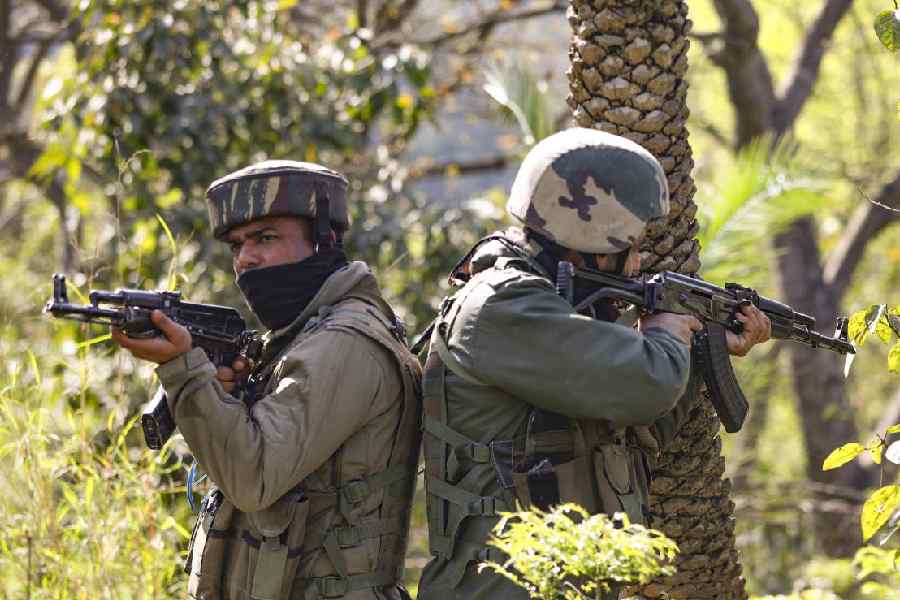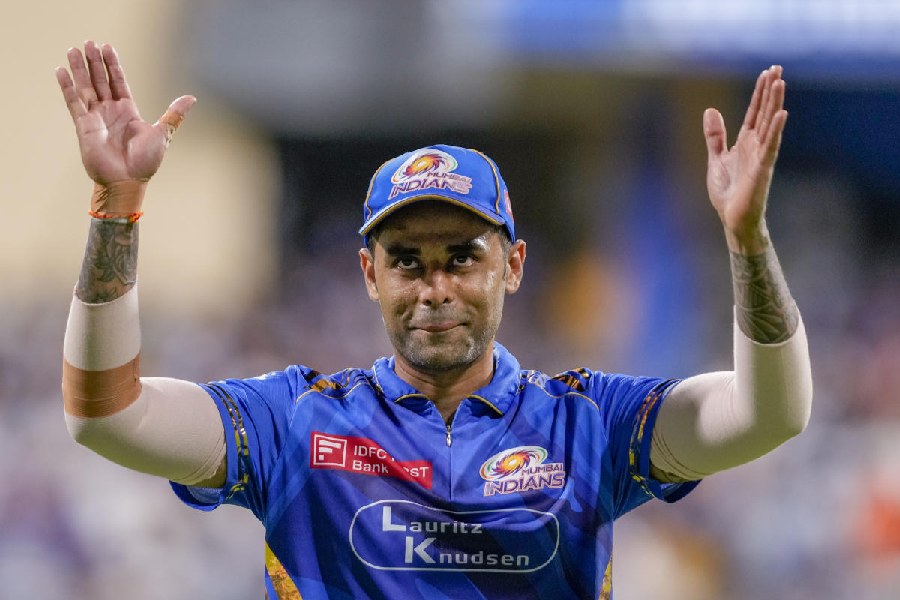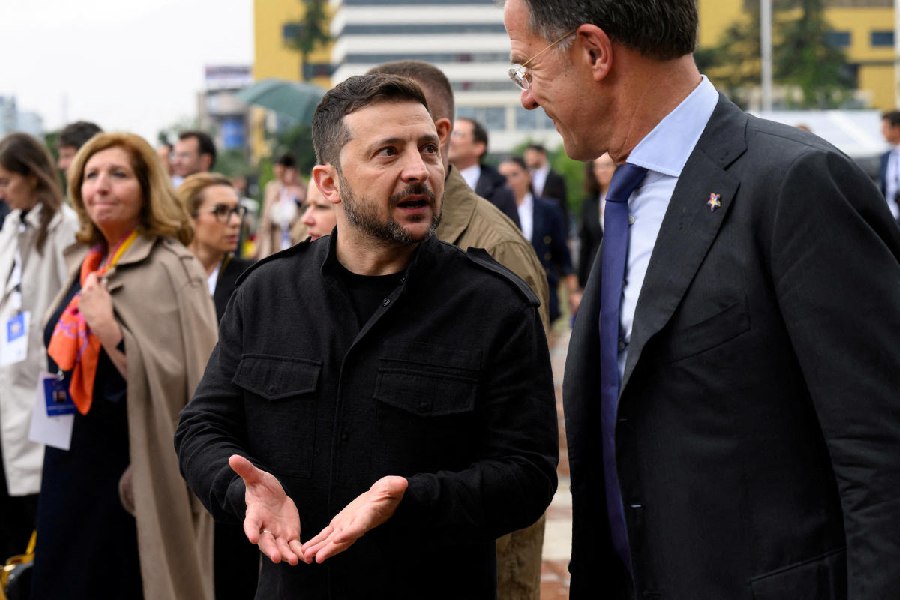|
|
In the brittle September sunshine, a man sat cross-legged, hands busy on the drum of a sarod. Behind him, the shop was dark with shapes of wood. There were ranks of sitars, hung from the ceiling, slender neck dropping to the fullness of the drum, surbahars laid out in half-open cases, tablas, tanpuras, harmoniums, and sarods, stripped of skin and plate, hollow curves of wood awaiting their final form. An array of tools hung from a rack, used to hone and polish, whittle and tease the wood into tune.
Hemen Sen set up shop in Calcutta over 65 years ago. According to his son, Tapan Kumar Sen, the instrument maker had been about seven or eight years old when he went to learn the sitar in Comillah, now in Bangladesh. His teacher also owned an instrument shop. Soon, Hemenbabu was making the instruments rather than playing them. As a teenager, he was drawn to Calcutta, where he came to set up shop. The small shop in Deshapriya Park would later become famous for its sarods. Not far away in Rashbehari Avenue, Hiren Roy’s shop was known for its sitars.
The two instrument makers seem to have been among the many who flourished in Calcutta from the beginning of the 20th century, and even earlier. Damodar Adhikari, for instance, set up a workshop in Calcutta in 1882. His successors, Kanailal and Nityananda, would later turn out finely crafted sitars that became immensely popular. The city became known for musical instruments, especially its sitars and sarods. Since the 19th century, these instruments have been fashioned and re-moulded to suit the changing traditions of performance. Calcutta — and its instrument makers — seem to have been in the thick of such changes.
Decades before Hemenbabu, a young Alauddin Khan had run away from home to come to the city and learn music. “His father had told him that all the great musicians could be found in Calcutta,” says Alauddin Khan’s son, the famous Ali Akbar Khan, in an interview. By the late 19th century, Calcutta was a “colonial metropolis”, a commercial hub and a centre of social and political reform movements. The last nawab of Oudh, Wajid Ali Shah, had already arrived to spend his days in louche and exquisite exile. With him came a retinue of musicians, including the sarodiya, Niamatullah Khan. According to some sources, the sarodiya was the first to fuse aspects of the sursringar with the chunky Afghanistani rabab. The wooden rabab was now fitted with a steel plate and strings.
Calcutta also gained importance with changing patterns of patronage, according to Adrian McNeil, who has written extensively on musical instruments. With the consolidation of British power, the courts that had traditionally supported musicians were dissolved. Musicians flocked to cities and found new patrons among the wealthy mercantile classes. In Calcutta, they also found a new audience in the ‘enlightened’, Western-educated Bengali.
A change in patronage seems to have given rise to different “aesthetic conventions” and different notions of performance and instrument design, says McNeil. From the intimacy of private chambers, performances were shifted to ticketed public concerts. New schools for music were also set up and the system of gharanas became dominant. In the 20th century, instruments as well as performance changed most radically, perhaps, with the spread of recorded music and the radio. Suddenly, musicians were faced with the demands of the microphone and short time slots on air. The sound of the instruments had to change, and with it, their structure.
Making instruments and playing them seem to have become closely entwined. Alauddin Khan and his brother, Ayat Ali Khan, set up their own instrument shop, Alam Brothers, and introduced several structural changes to the sarod and the sitar. Hemenbabu, who trained with them for a while, also made changes of his own. “My father and Hirenbabu were innovators,” said Tapan Sen, who sat inside Hemen and Co., repairing a sarod that had been damaged in transit. “They would make the tools they could not find in the market,” he said, holding up a file with a delicate blade and a worn wooden handle. It had been made by Hemenbabu himself. Older sarods had a larger drum and a longer plate, both of which were modified by his father, says Sen. Sitars were also made more compact.
For some, the art of making instruments seems to have been informed by an intimate knowledge of music and its performance. Hemenbabu had learnt the sitar, and Tapan Sen learnt the sarod under Ustad Dhyanesh Khan, the son of Ali Akbar Khan. His brother, Ratan Kumar Sen, had also learned the sitar. According to Tapan Sen, it is impossible to achieve perfection in the instruments without knowing the music.
Hemen and Co.’s famous customers have belonged to various gharanas and their instruments have been made accordingly. Alauddin Khan and Ali Akbar Khan were proponents of the Maihar gharana. They used their fingernails as well as the tips of their fingers to stop the strings of the sarod. The sarods used in this gharana have a total of 25 strings — eight main strings, 15 sympathetic strings, two chikari and two “jhala” strings. The instruments are typically made of tun wood, which gives a “bold, sweet sound” says Sen. Amjad Ali Khan, whose sarod was damaged on a flight, belongs to the Gwalior gharana. For such musicians, sarods are made from teak wood for a “sharper” sound and have 19 strings in all. Only the nails are used to press the strings of the sarod. When it comes to sitars, Pandit Ravi Shankar, also of the Maihar gharana, plays instruments with seven main strings and 20 sympathetic strings. They usually have ornate carving and inlay work. Vilayat Khan of the Ettawah gharana preferred a more austere instrument, with six main strings and little decoration.
Dulal Chandra Kanji, who trained under Hemenbabu in the 1970s, stresses the importance of knowing the individual performer. He insists on meeting the players to study the style in which they play, how old they are or how their fingers are shaped. Many young performers have started out with instruments made by Dulalbabu. Like Tapan Sen, he is sceptical of the “standardized” instruments that are made in most shops today, where all the readymade parts are sourced from outside.
Hemen and Co. has its own manufacturing unit. Each sarod is crafted from a single block of wood that is processed and then left to mature for 10 to 15 years. The skins for the sarods come from the animals sacrificed at the Kalighat temple. Only the strings are imported from Germany. However, instrument making seems to have become a more impersonal craft. A karigar may be involved only in one part of the process and most of them do not have an extensive knowledge of the music, says Sen. Many are hawkers or agricultural labourers who are employed on a temporary basis.
While there is still a robust demand for the instruments, a large part of it comes from the export market. Dulalbabu recalls the excitement of packing and shipping out 50 sitars and sarods in 1972, when he was still working with Hemen and Co. Most of the “great musicians” have now moved away from Calcutta. But in the 1960s and 70s, when Ali Akbar Khan and Ravi Shankar made their first forays into the West, the city was still a hub for instrumentalists. The atmosphere must have been electric. “We were in touch with all the major musicians of the time,” Dulalbabu says. “There was much discussion and exchange of ideas. It was a different mindset altogether.” That was what drew him to Calcutta, he explains. Suddenly, one hears the ghosts of many older voices in his words.












